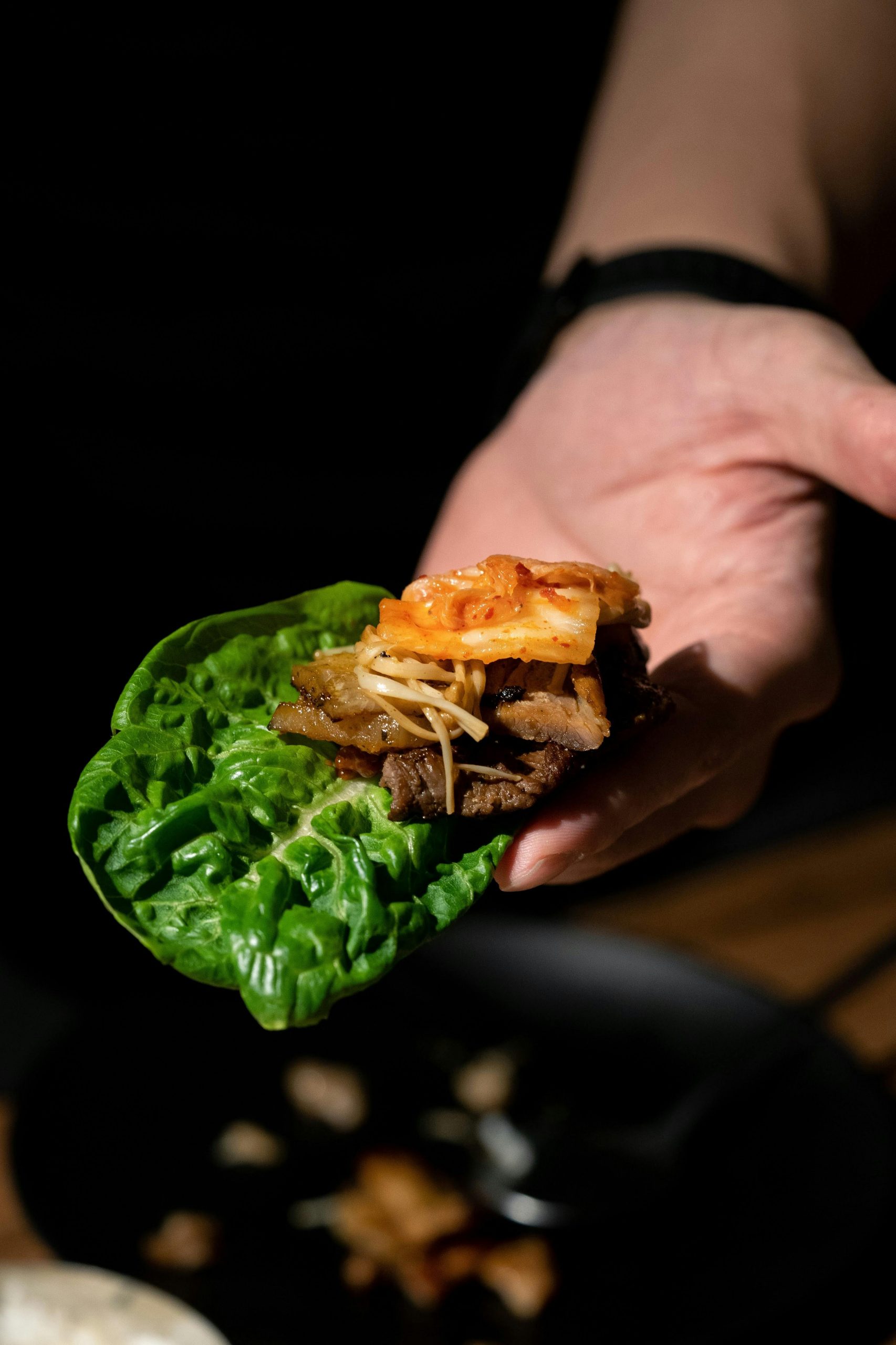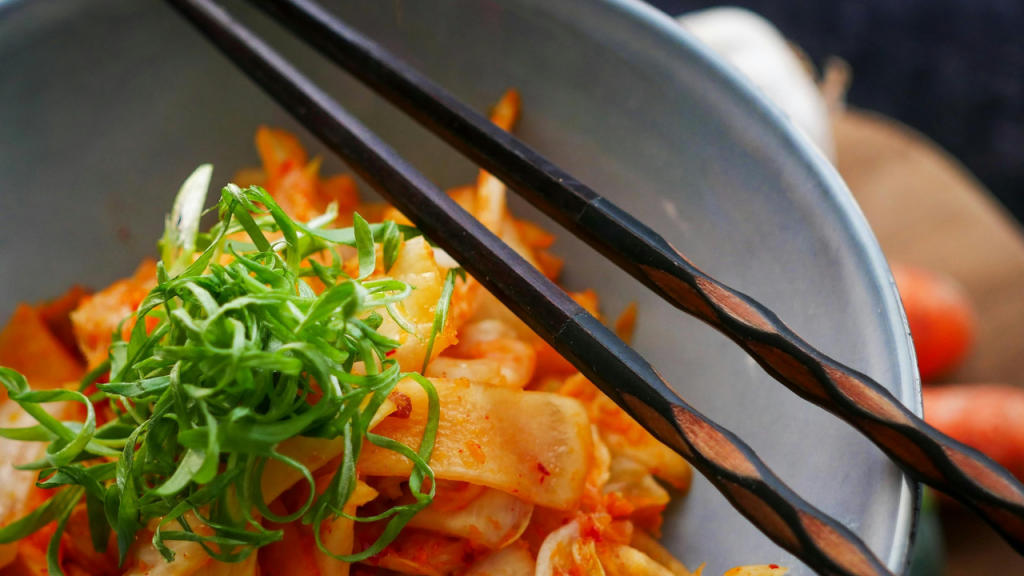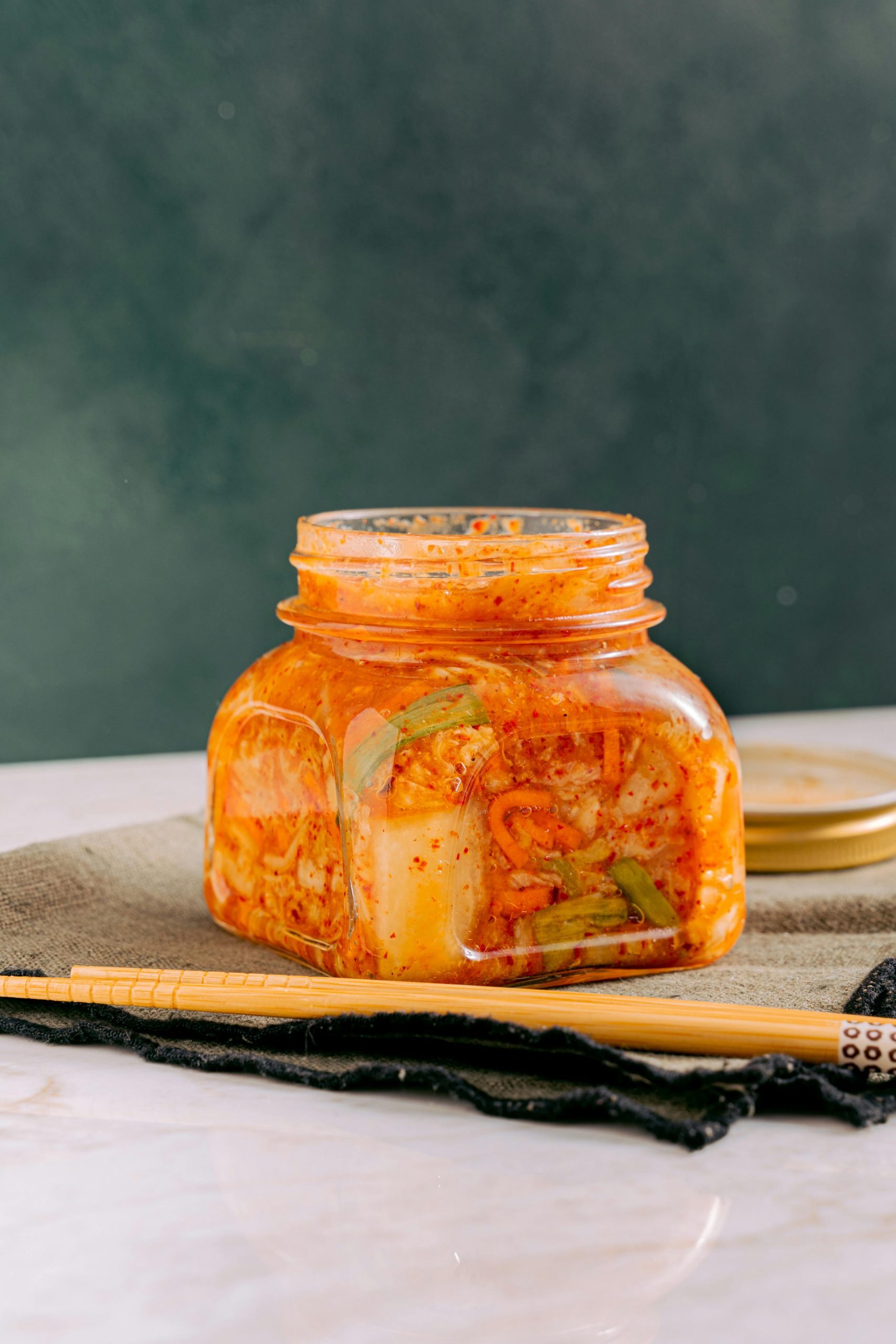When it comes to delicious probiotic superfoods, kimchi – a Korean fermented condiment – takes the cake. If you’re a health nut, then you’ll know that fermented foods such as kefir, kombucha, sauerkraut and kimchi work wonders for your gut biome and overall wellbeing because they’re packed with probiotics and immune-boosting enzymes.
Why the spotlight on kimchi? Because it’s delicious! The fermented condiment makes a great topping for those lazy mid-week dishes that lack a little something. Why not tackle lacklustre meals and gut health with one big spoonful?
What is kimchi?
Kimchi is a traditional Korean fermented condiment that’s packed with flavour and regarded as one of the healthiest, probiotic-rich foods you can eat. In fact, it’s been recognised globally as a ‘functional food’ due to its many beneficial properties for the body.

Although there are thousands of kimchi recipes, the traditional version is made with a variety of raw veggies, herbs and spices including garlic, salt, cabbage, radishes, pak choi and root ginger. Some varieties also include a blend of anti-inflammatory turmeric, and other spices such as red chillies.
What are kimchi’s health benefits?
Fermented foods such as kimchi, kombucha, kefir and sauerkraut are rich in live enzymes and probiotics which form a protective lining in the intestines and help to shield the body against disease and infection.
According to a study by the Journal of Applied Microbiology, some of the main benefits of fermented foods such as kimchi include;
• Promoting a healthy intestinal tract
• Helping to boost the immune system
• Enhancing the absorption of nutrients through other foods
• Reducing symptoms of lactose intolerance
• Decreasing the prevalence of allergies
• Reducing the risk of certain cancers
A healthy gut means a healthy immune system
The health of our immune system is directly linked to the diversity of our gut microbes – also known as the microbiome. So, the more gut microbes you have in your digestive tract, the greater the chance your body has to fight and ward off infections.
Here is a simple recipe to make your own kimchi at home
Ingredients
- 1 medium head white cabbage
- 1/4 cup sea salt or kosher salt
- Filtered water
- 1 Tbsp grated garlic (5 to 6 cloves)
- 1 tsp grated ginger
- 1 tsp sugar
- 2 to 3 Tbsp fish sauce or water
- 1 to 5 Tbsp red pepper flakes (gochugaru)
- 230g Daikon radish, peeled and cut into matchsticks
- 4 onions trimmed and cut into 1-inch pieces
You will need:
- Cutting board and knife
- Large bowl
- Gloves (optional but highly recommended)
- Plate and something to weigh the kimchi down, like a jar or can of beans
- Colander
- Small bowl
- Clean 1 litre jar with canning lid or plastic lid
- Bowl or plate to place under jar during fermentation
Instructions
- Cut the cabbage lengthwise into quarters and remove the cores. Cut each quarter crosswise into 2-inch-wide strips.
- Place the cabbage and salt in a large bowl. Using your hands (gloves optional), massage the salt into the cabbage until it starts to soften a bit, then add water to cover the cabbage. Put a plate on top and weigh it down with something heavy, like a jar or can of beans. Let stand for 1 to 2 hours.
- Rinse the cabbage under cold water 3 times and drain in a colander for 15 to 20 minutes. Rinse and dry the bowl you used for salting, and set it aside to use in step 5.
- Meanwhile, combine the garlic, ginger, sugar, and fish sauce (or 3 tablespoons water) in a small bowl and mix to form a smooth paste. Mix in the chilli flakes using 1 Tbsp for mild and up to 5 Tbsp for spicy.
- Gently squeeze any remaining water from the cabbage and return it to the bowl along with the radish, onion, and seasoning paste.
- Using your hands, gently work the paste into the vegetables until they are thoroughly coated.
Pack the kimchi into the jar, pressing down on it until the brine rises to cover the vegetables. Leave at least 1 inch of headspace. Seal the jar with the lid. - Let the jar stand at room temperature for 1 to 5 days. You may see bubbles inside the jar and brine may seep out of the lid; place a bowl or plate under the jar to help catch any overflow.
- Check the kimchi once a day, pressing down on the vegetables with a clean finger or spoon to keep them submerged under the brine. (This also releases gases produced during fermentation.) Taste a little at this point, too! When the kimchi tastes ripe enough for your liking, transfer the jar to the refrigerator. You may eat it right away, but it’s best after another week or two.
ALSO SEE: Understanding the differences between fermenting ; pickling
Feature image: Pexels
Article originally published and written by


